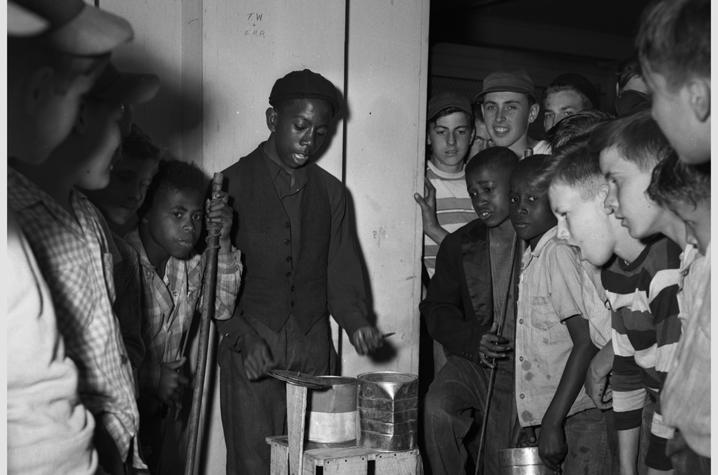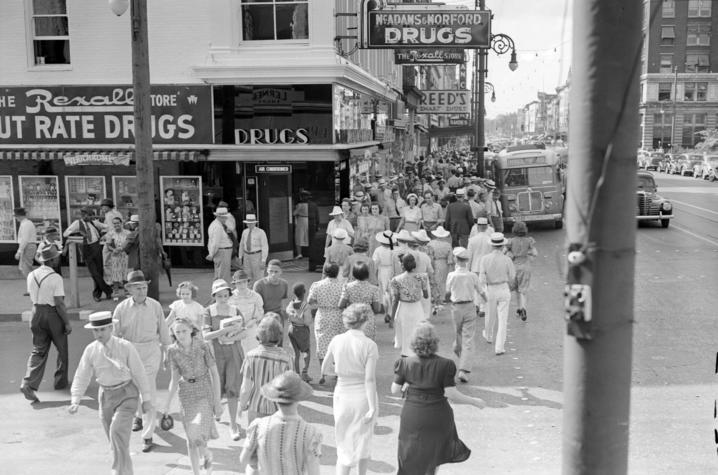UK Libraries Makes 13,000+ Lexington Herald-Leader Images Available Online
LEXINGTON, Ky. (Dec. 13, 2019) — This fall, the University of Kentucky Libraries Special Collections Research Center launched a custom digital library for the John C. Wyatt Lexington Herald-Leader (LHL) photographs collection. The site provides access to more than 13,000 digitized images with advanced search features, location mapping, an integrated collection guide viewer and more.
The LHL collection consists of an estimated 2 million unique photographic negatives spanning the years 1939-2001. The collection is an unparalleled source of photographic evidence of the many historical, cultural, and industrial changes that have shaped Lexington and its surrounding region.
The scope of the collection highlights the day-to-day activities of Kentuckians. It follows the changing urban landscape of Lexington, the agricultural, tobacco and horse racing industries, key national events such as World War II and Vietnam, as well as notable regional and national figures.
The Lexington Herald-Leader's origins can be traced back over 130 years to Lexington Daily Press. Its descendant, the Morning Herald, was first published Jan. 1, 1895, and became known as the Lexington Herald in 1905. Another large circulating newspaper during this time was the Kentucky Leader, which eventually became known as the Lexington Leader in 1901.
In 1937, the owner of the Leader, John G. Stoll, bought the Herald, and both daily papers were published concurrently (the Herald in the morning and the Leader in the afternoon) for the next 46 years. The newspapers had a combined Sunday edition.
In 1973, the newspapers were purchased by the Knight-Ridder Corporation and in 1983 were merged into a single, morning paper that is still published as the Lexington Herald-Leader.
In June 2006, the McClatchy Company purchased Knight-Ridder for approximately $4 billion in cash and stock as well as assumed $2 billion in Knight-Ridder debt. The Lexington Herald-Leader was one of 20 Knight-Ridder papers retained by McClatchy.
For almost 44 years, the photography collection was cared for by John C. Wyatt (1928-2005), who became a Lexington Leader photographer in 1946 and was the chief photographer for many years. Wyatt retired from the Lexington Herald-Leader in 1990. He not only participated in the creation of this visual resource, but he was also responsible for the organization and intellectual control of the collection.
In 2004, the collection was donated to UK Libraries who obtained a National Historical Publications and Records Commission grant to transform this large newspaper negative collection from an unprocessed and only marginally accessible state, to a well-documented archival collection with a searchable database. The grant allowed the project team to preserve the most at-risk negatives to prevent them from deteriorating beyond use. Archivists continue to work on and digitize this massive collection today.
The LHL collection is the most extensive, single collection of still photographic images documenting Lexington's 20th century history in existence. Digitized content from this collection is available online at https://lhlphotoarchive.org.
The Special Collections Research Center at UK Libraries sustains the Commonwealth's memory and serves as the essential bridge between past, present and future. By preserving materials documenting the social, cultural, economic and political history of Kentucky, the center provides rich opportunities for students to expand their worldview and enhance their critical thinking skills. Special Collections Research Center materials are used by scholars worldwide to advance original research and pioneer creative approaches to scholarship. UK Libraries Special Collections Research Center is the Archives, the Louie B. Nunn Center for Oral History, the King Library Press, the Wendell H. Ford Public Policy Research Center, the Bert T. Combs Appalachian Collection, the John G. Heyburn Initiative and ExploreUK.
As the state’s flagship, land-grant institution, the University of Kentucky exists to advance the Commonwealth. We do that by preparing the next generation of leaders — placing students at the heart of everything we do — and transforming the lives of Kentuckians through education, research and creative work, service and health care. We pride ourselves on being a catalyst for breakthroughs and a force for healing, a place where ingenuity unfolds. It's all made possible by our people — visionaries, disruptors and pioneers — who make up 200 academic programs, a $476.5 million research and development enterprise and a world-class medical center, all on one campus.
In 2022, UK was ranked by Forbes as one of the “Best Employers for New Grads” and named a “Diversity Champion” by INSIGHT into Diversity, a testament to our commitment to advance Kentucky and create a community of belonging for everyone. While our mission looks different in many ways than it did in 1865, the vision of service to our Commonwealth and the world remains the same. We are the University for Kentucky.






